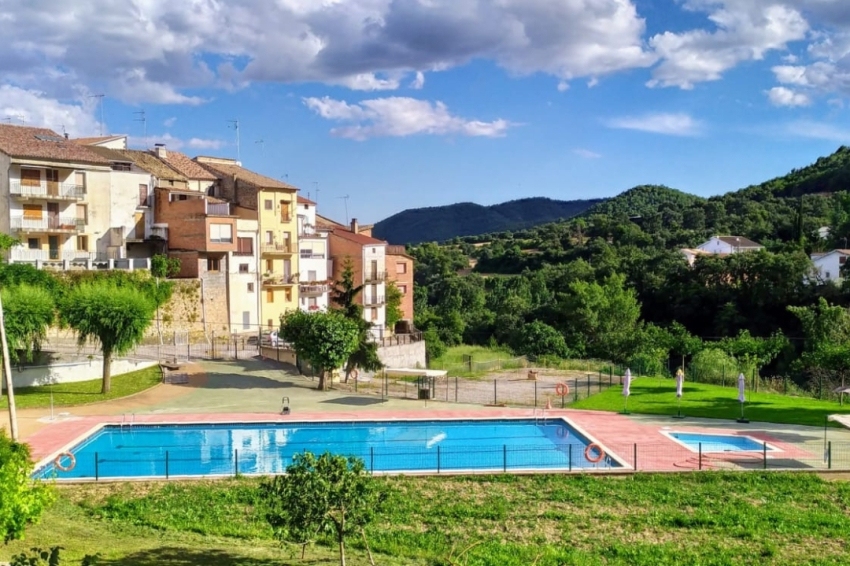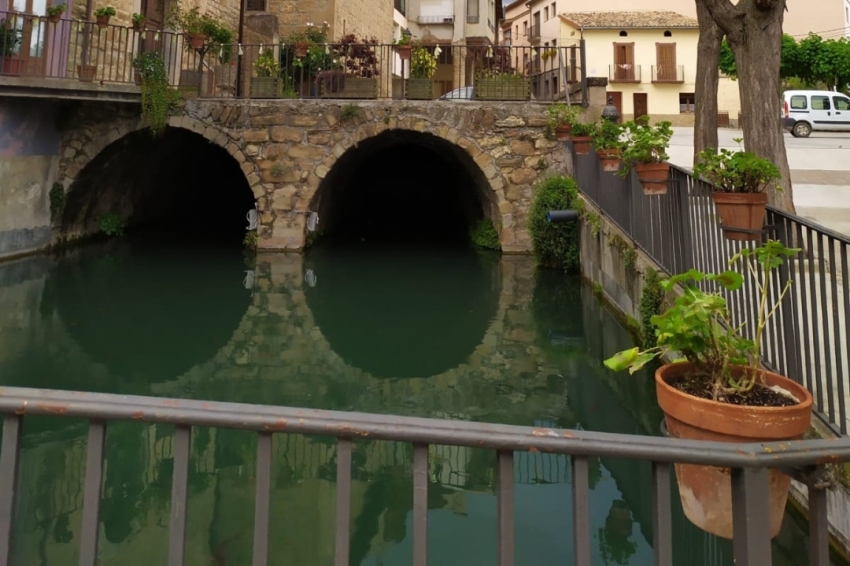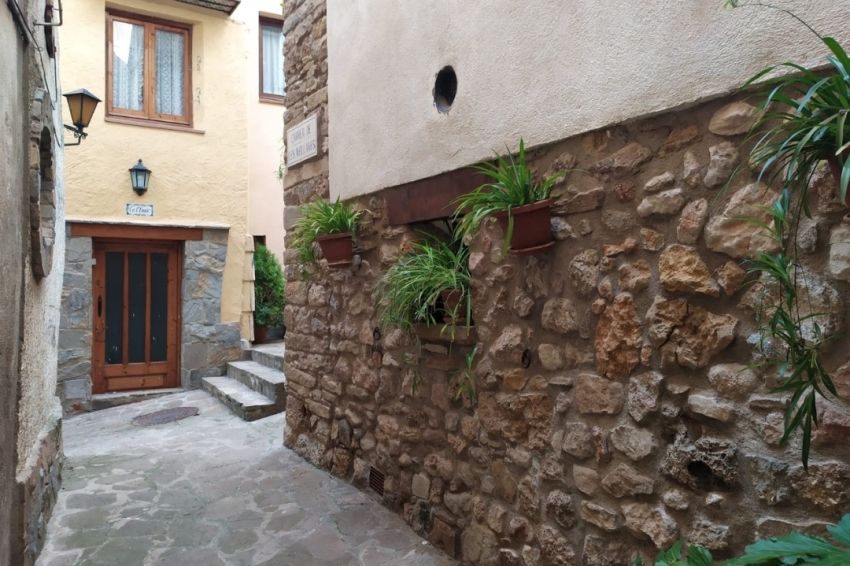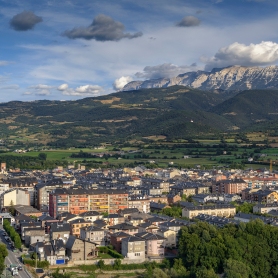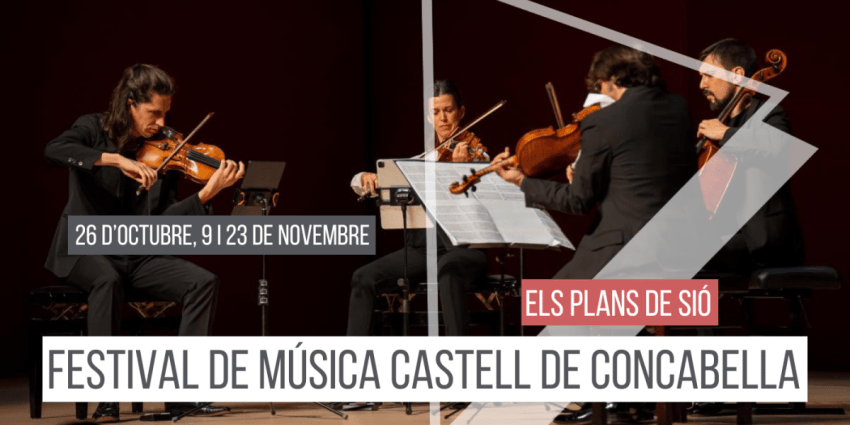Peramola
The term includes, in addition to the town of Peramola, head of the municipality, the towns of Tragó, Cortiuda, the hamlet of Castell-Llebre and the village of Ahorarga, in addition to the hermitages of Sant Honorat and Sant Salvador del Corb and numerous scattered farmhouses. all over. The center of Peramola is located in the wide Segre valley and at the foot of the first mountains of the Pre-Pyrenees: the Sant Honorat mountain range and the Aubenç mountain range.
It is the ideal starting point to discover a wonderful Pre-Pyrenees with spectacular rock formations, Romanesque hermitages and dizzying cliffs with spectacular views.
The town preserves remains of medieval charm present in its wall, the arcades of its narrow houses, stone windows and in its structure and circular organization.
One of the first signs of human presence in these territories corresponds to the cave paintings of the Roca de los Moros. The toponym of Peramola clearly refers to the tall stone mound that stands behind the town, the Sant Honorat mound, made of conglomerates.
On the riverside plain of Peramola, to the south of the town, there remains an ancient tower, called the Moorish Tower. It is possibly a subsidiary construction of the town's castle. It is a square tower, about 5.40 m on the outer sides and three times its base high.
Above the Sant Honorat mountain range are the ruins of the Sant Honorat hermitage (1,061 m), with the collapsed vault. It still preserves the portal with a voussoir lintel and the date 1729.
The parish church of Sant Miquel, of Romanesque origin, is located in Plaza Josep Roca, which is surrounded by a set of old buildings of beautiful architecture, presenting a special and picturesque charm to the place, increased by the refreshing bath of the carp that lazily move through the waters of the raft.
Water town, in Peramola you can enjoy a pleasant walk along the Camí de les Fonts, go on a hike to the Clot de la Font Viva waterfall or fill your canteens from the fountains inside the Village.
Peramola has different elements of tourist interest, especially related to Romanesque art. There are accommodation and restaurant establishments.
The municipality of Peramola is also made up of other population centers:
Drink
Verbal tradition attributes the birth of Tragó to the settlement of a group of people who come from another place of the same name: Tragó, which stood centuries ago in the Ares mountain range.
In Tragó, there are three streets that look towards the Segre River, the most distinctive we could say is Calle del Forn. We can visit two squares, Plaza de Estudio and Plaza del Valle, where all the town's activities and the Guillem de Belivasta literary contest (the last Cathar who spent the night in Tragó) are held.
The outskirts of Tragó are extensive agricultural plains that lead to beautiful spaces that allow us to discover beautiful forests on the banks of the Segre River while we take a route of little difficulty on foot or by bicycle.
Neverrga
Located in the southern part of the term, to the left of the Torrent Salat, is the village of Ahorarga. The tiny pine cone that forms the current urban center is documented in 1640.
The nucleus (made up of a group of peasant houses and farms) is located at the foot of all the mountains that make up the municipality of Peramola. It is a perfect viewpoint to contemplate the splendor of the Rialb reservoir. Neverrga and Tragó share the parish of Santa Llúcia, which is of local interest.
Cortiuda
In Cortiuda we also find strong evidence of prehistoric burials: the dolmen called the Stone of the Three Lords. This megalith acts as a landmark and breaks between the terms of the Barony of Rialb, Peramola and Gabarra. His remains are found in the Diocesan Museum of Solsona (like all the prehistoric remains found in the municipality).
Castell-llebre
Proudly nestled on the remains of the fortress of the same name, in a privileged place overlooking the banks of the Segre, we find the church of Castell-Llebre. An originally Romanesque construction, like the bell tower, with parish status until 1904, when it became dependent, as a sanctuary, on the parish of Peramola.
What to do
Solsona Experience, descobreix el Solsonès
Solsona (a 21.7 Km)Experiential guided tours of the Solsonès region for all audiences, groups and…
Globus Pirineu
Solsona (a 24 Km)Enjoy the opportunity and experience to discover the richness of the landscape…
Where to eat
Taverna de La Vansa
La Vansa i Fórnols (a 25.9 Km)A self-managed mountain tavern in Espai La Vansa, ideal for enjoying local…
Bar Restaurant El Jardí
Sant Llorenç de Morunys (a 27.9 Km)The Bar-Restaurant El Jardí de Sant Llorenç de Morunys offers traditional cuisine…
Where to sleep
Mas Ampurdanés
La Baronia de Rialb (a 4.8 Km)It is located on the outskirts of Pallerols, in the municipality of…
Càmping Oliana
Oliana (a 3.4 Km)Enjoy an idyllic environment at Camping Oliana! Where you can stay in…
Hotel La Freixera
Solsona (a 21.8 Km)Discover Hotel la Freixera, a charming boutique hotel located in the middle…
La Torreta d'Olius
Olius (a 25 Km)Enjoy an authentic Catalan farmhouse, which was documented in the year 900…



